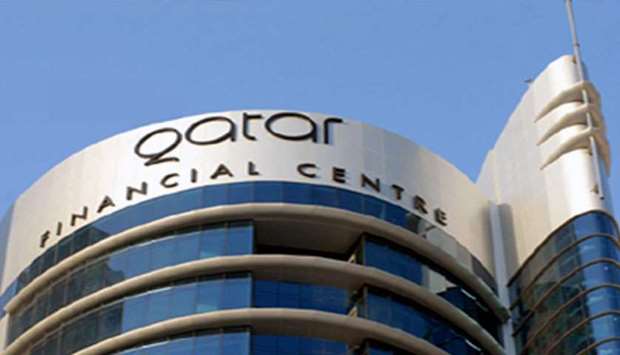Qatar Inc is well-positioned to issue medium and long-term notes in China's capital markets and there is greater potential to grow portfolio and direct investments between the two countries using RMB (Renminbi), according to the Qatar Financial Centre (QFC).
An additional avenue for the increased QRC (Qatar RMB Centre) transactions is in the financial space, where funding deals from Qatari financial institutions and corporates are positioned to rise, said QFC in its report.
Finding that Qatari financial institutions already tap into Chinese capital markets, it said, however, this activity is concentrated exclusively on short-term transactions in money markets.
"Looking forward, Qatari corporates are well-positioned to issue medium- and long-term notes in the form of Panda bonds (onshore), much like QNB Finance has already tapped into Dim Sum bonds (offshore in London)," it said.
These pioneering Qatari financial institutions and corporates would join ranks with the likes of Daimler, Trafigura and Veolia to issue substantial debt instruments in Chinese capital markets.
"As Qatari entities increasingly tap into Asian capital markets, such as Taiwan through Formosa bonds, exploring an even larger and deeper capital market in China beckons," the report said.
This is especially true as the spread between the dollar and RMB-denominated is narrowing, to an average of 116 basis points in 2019 amongst a sample of over 120 transactions and is projected to fall further.
Beyond funding transactions, there is perhaps even greater promise to expand portfolio and direct investments between the two countries using RMB, QFC said.
China has substantial and rapidly growing savings pools that need to be invested in offshore assets, while Qatar has a budding, efficient and increasingly sophisticated funds management sector.
At the institutional level from China, there is strong interest in investment in offshore infrastructure and real estate, two asset classes in which Qatar has considerable expertise and opportunities, it said.
On the other hand, Qatari investors are eager to tap into deep and lucrative Chinese capital markets, it said.
"A primary avenue is through the Bond Connect scheme, which allows global investors to directly trade Chinese bonds," QFC said.
The platform is growing at a rapid clip, and over 2019 reached trading volume of RMB2.63tn with an average daily turnover of RMB10.7bn.
The QFC said the QRC’s volumes have risen steadily over time, to have reached RMB184.5bn in 2019.
Most of the activity was dominated by financial market transactions, which are principally money market flows, it said, adding the largest participants are Qatari banks regulated by the Qatar Central Bank that are providing and drawing on excess short-term liquidity.
This Qatari increase in RMB usage mirrors that of global financial institutions, of which 26.3% now use the RMB for payments as of July 2019 according to Watch (powered by SWIFT BI).
The remaining of the QRC transactions are either fund transfers between or within financial institutions as well as remittances and trade-related transactions.
This pattern largely mirrors that of other global RMB centers, from which global financial institutions and corporates often send monies between jurisdictions they operate under.
Finding that Qatari financial institutions already tap into Chinese capital markets, it said, however, this activity is concentrated exclusively on short-term transactions in money markets.
"Looking forward, Qatari corporates are well-positioned to issue medium- and long-term notes in the form of Panda bonds (onshore), much like QNB Finance has already tapped into Dim Sum bonds (offshore in London)," it said.
These pioneering Qatari financial institutions and corporates would join ranks with the likes of Daimler, Trafigura and Veolia to issue substantial debt instruments in Chinese capital markets.
"As Qatari entities increasingly tap into Asian capital markets, such as Taiwan through Formosa bonds, exploring an even larger and deeper capital market in China beckons," the report said.
This is especially true as the spread between the dollar and RMB-denominated is narrowing, to an average of 116 basis points in 2019 amongst a sample of over 120 transactions and is projected to fall further.
Beyond funding transactions, there is perhaps even greater promise to expand portfolio and direct investments between the two countries using RMB, QFC said.
China has substantial and rapidly growing savings pools that need to be invested in offshore assets, while Qatar has a budding, efficient and increasingly sophisticated funds management sector.
At the institutional level from China, there is strong interest in investment in offshore infrastructure and real estate, two asset classes in which Qatar has considerable expertise and opportunities, it said.
On the other hand, Qatari investors are eager to tap into deep and lucrative Chinese capital markets, it said.
"A primary avenue is through the Bond Connect scheme, which allows global investors to directly trade Chinese bonds," QFC said.
The platform is growing at a rapid clip, and over 2019 reached trading volume of RMB2.63tn with an average daily turnover of RMB10.7bn.
The QFC said the QRC’s volumes have risen steadily over time, to have reached RMB184.5bn in 2019.
Most of the activity was dominated by financial market transactions, which are principally money market flows, it said, adding the largest participants are Qatari banks regulated by the Qatar Central Bank that are providing and drawing on excess short-term liquidity.
This Qatari increase in RMB usage mirrors that of global financial institutions, of which 26.3% now use the RMB for payments as of July 2019 according to Watch (powered by SWIFT BI).
The remaining of the QRC transactions are either fund transfers between or within financial institutions as well as remittances and trade-related transactions.
This pattern largely mirrors that of other global RMB centers, from which global financial institutions and corporates often send monies between jurisdictions they operate under.


